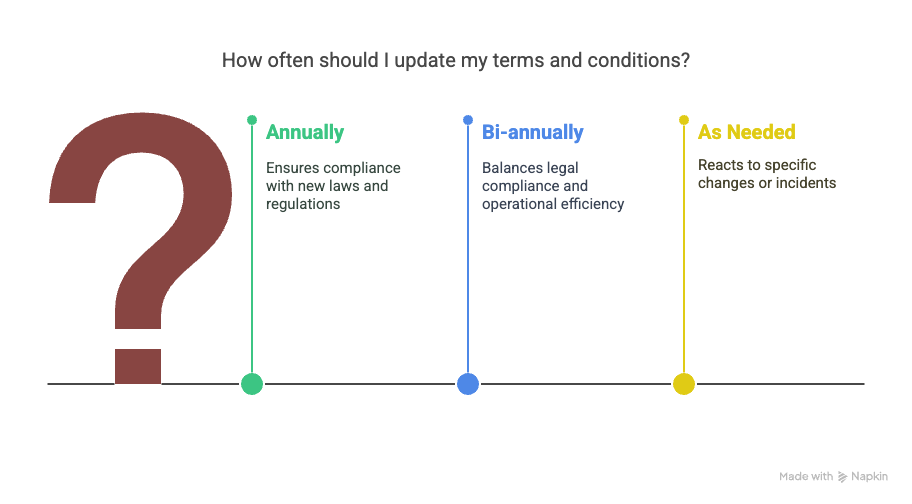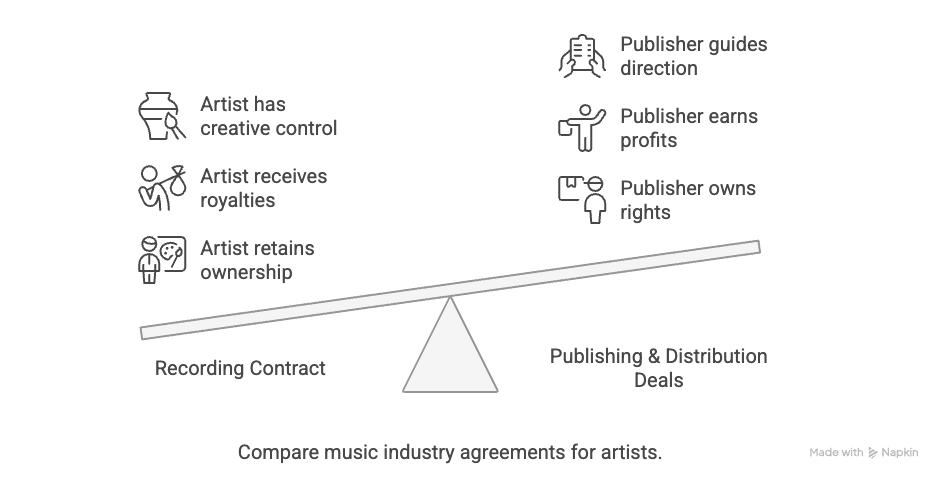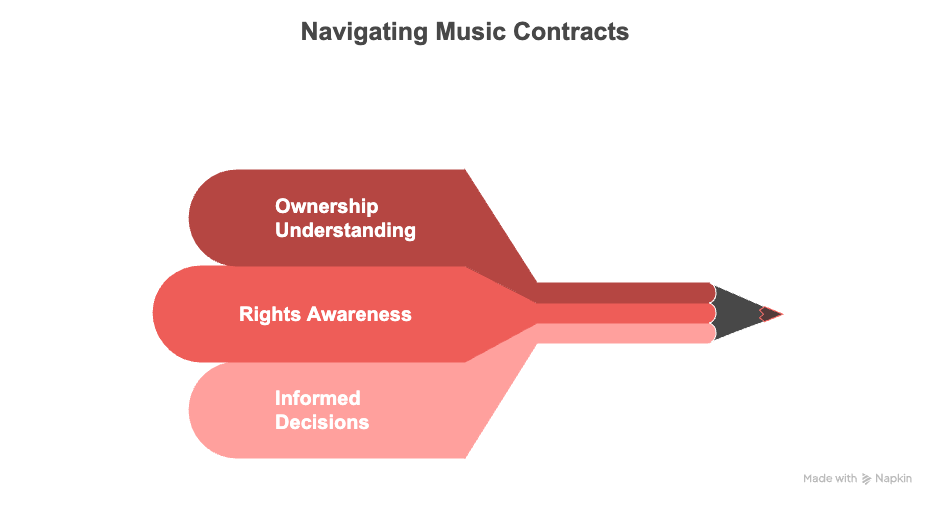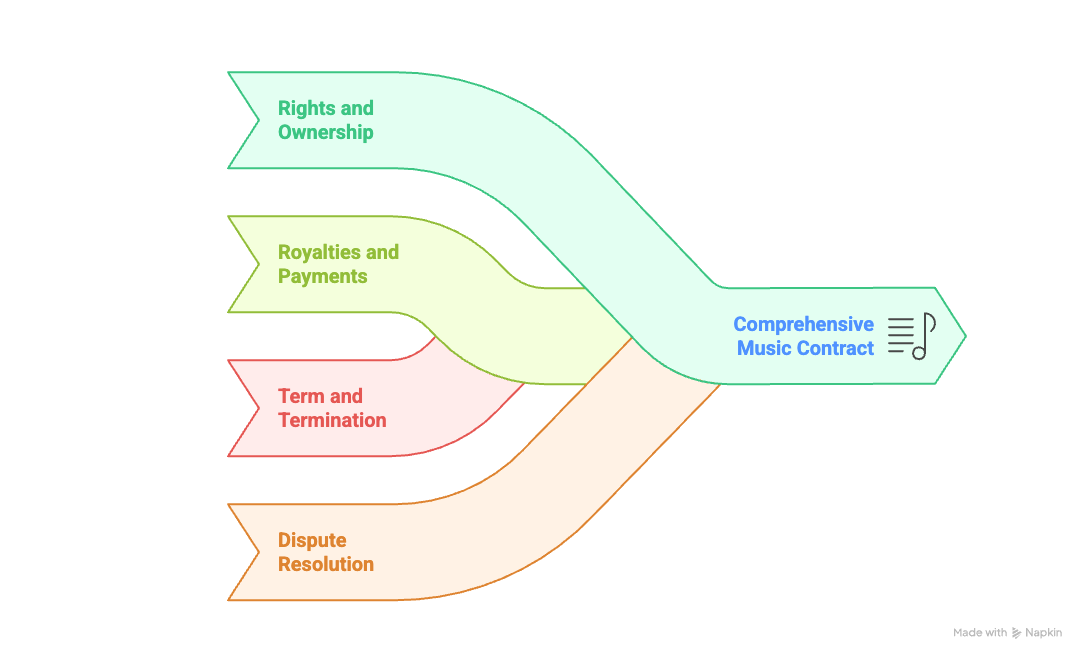
How Often Should You Update Terms And Conditions? (canada)
Last Updated on May 10, 2025
Terms and Conditions aren’t a static legal formality - they’re a living, evolving policy that should reflect your real-world business operations. If your terms are outdated, vague, or incomplete, you risk losing enforceability under Canadian law, especially in the event of user disputes or platform changes.
In this guide, you’ll learn how often to update your website’s Terms and Conditions, what triggers an update, how to notify users properly, and how this affects your legal protection and SEO.
Why Terms and Conditions Must Be Kept Current
In Canada, courts require that Terms and Conditions:
- Accurately reflect your website’s practices
- Be clearly communicated to users
- Show proof of acceptance for enforcement
If your policies reference outdated services, payment structures, or laws, users may successfully challenge their validity.
SEO & Legal Implications of Outdated Terms
1. Legal Enforceability Drops
Canadian courts will not enforce misleading, outdated, or deceptive Terms - especially without recent user consent.
2. SEO Trust Signals Decline
Google uses freshness indicators (like last-updated timestamps and versioning) to assess page reliability - especially for YMYL (Your Money or Your Life) content like legal pages.
3. Inconsistency with Linked Policies
Outdated Terms may contradict your Privacy Policy or Refund Policy, creating legal exposure and damaging user trust.
4. Loss of Platform Compliance
App stores, payment gateways, and affiliate networks may require accurate, up-to-date legal policies to stay in good standing.
When Should You Update Terms and Conditions?
You should review your T&Cs at least once per year, and update them:
- When you change your pricing, refund, or billing models
- If you add a subscription plan, free trial, or upsell flow
- After integrating new third-party tools or payment processors
- Following new data laws (e.g., Quebec’s Law 25 or global GDPR)
- When user behavior or complaints highlight unclear sections
- If you expand into new markets or offer multilingual support
Pro tip: Add quarterly legal policy reviews to your internal ops checklist.
How to Communicate Changes to Users
To preserve enforceability, use at least one of these user notice methods:
- Clickwrap Consent: Ask users to accept new terms via checkbox or prompt at login or checkout.
- Banner or Modal Pop-Up: Highlight policy changes upon site entry.
- Email Announcement: Especially for registered users or paid accounts.
- “Last Updated” Timestamp: Make it visible at the top of the policy page.
For major changes (e.g., pricing, dispute resolution, arbitration clauses), clickwrap consent is highly recommended.
Final Word
Outdated Terms and Conditions don’t just weaken your legal standing - they signal to search engines and users that your business may be untrustworthy or non-compliant.
Keep your T&Cs updated, visible, and aligned with your actual operations. This improves your enforceability, brand credibility, and SEO visibility.
Need a customizable, Canadian-compliant template that’s easy to revise? Download it free today.
Download the Free Website Terms And Conditions Template
Ready to apply what you've learned? Get instant access to the Website Terms And Conditions PDF - free, editable, and built for Canadian businesses. No sign-up required.
Frequently Asked Questions
Answers to common questions about How Often Should You Update Terms And Conditions? (canada).
What legal issues arise if I don’t update my Terms regularly?
You risk unenforceable contracts, misleading users, and losing control in disputes. Outdated terms may conflict with consumer laws.
How do I know if a change is “material”?
If it affects user rights, pricing, subscriptions, dispute terms, or data usage, it’s material and requires clear notification.
Can I be fined in Canada for inaccurate Terms and Conditions?
Yes - particularly under consumer protection and eCommerce regulations if misleading or incomplete terms impact users.
Do payment processors or app stores check your Terms?
Often, yes. Platforms like Stripe, PayPal, Apple, and Google require clear, accurate legal policies for account approval.
Should I notify users even for small updates?
Best practice is to log all changes and notify users if it changes how they interact with your site, even minimally.
How often should Canadian websites update their Terms?
Review at least once a year, and update whenever business, legal, or platform changes occur.
Are users bound by updated Terms automatically?
Only if notified properly. For significant changes, you should require user acknowledgment.
Should I version my Terms and Conditions?
Yes. Use clear version numbers and keep an archive for legal reference.
Do Terms changes need legal review?
Not always, but for material changes involving risk, compliance, or user rights, legal input is a smart investment.
Can I summarize changes for users?
Yes. A bullet list or summary of major updates builds trust and transparency.
Explore More in Creative Digital Contracts
Discover curated templates in Creative Digital Contracts to help your business stay compliant and efficient.


